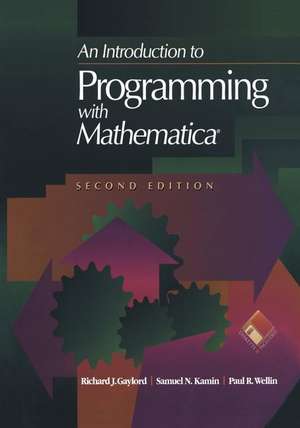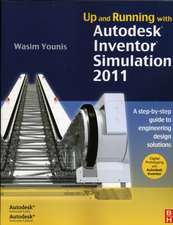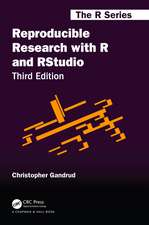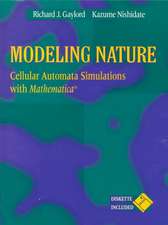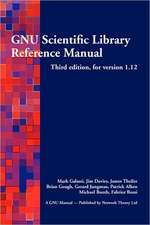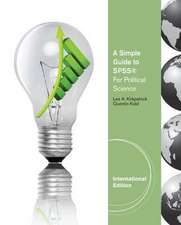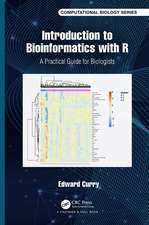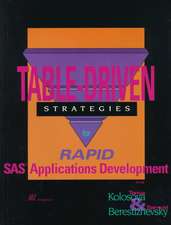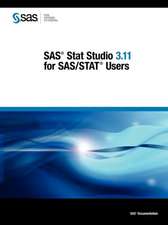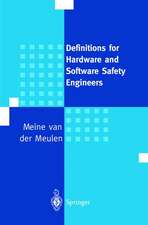An Introduction to Programming with Mathematica®
Autor Richard J. Gaylord, Samuel N. Kamin, Paul R. Wellinen Limba Engleză Paperback – 28 sep 2011
| Toate formatele și edițiile | Preț | Express |
|---|---|---|
| Paperback (1) | 347.26 lei 6-8 săpt. | |
| Springer – 28 sep 2011 | 347.26 lei 6-8 săpt. | |
| Hardback (1) | 344.69 lei 38-44 zile | |
| Springer – 12 oct 1995 | 344.69 lei 38-44 zile |
Preț: 347.26 lei
Preț vechi: 434.07 lei
-20% Nou
Puncte Express: 521
Preț estimativ în valută:
66.45€ • 69.70$ • 55.32£
66.45€ • 69.70$ • 55.32£
Carte tipărită la comandă
Livrare economică 01-15 aprilie
Preluare comenzi: 021 569.72.76
Specificații
ISBN-13: 9781461275022
ISBN-10: 1461275024
Pagini: 480
Ilustrații: XXIII, 452 p.
Dimensiuni: 178 x 254 x 25 mm
Greutate: 0.83 kg
Ediția:2nd ed. 1996. Softcover reprint of the original 2nd ed. 1996
Editura: Springer
Colecția Springer
Locul publicării:New York, NY, United States
ISBN-10: 1461275024
Pagini: 480
Ilustrații: XXIII, 452 p.
Dimensiuni: 178 x 254 x 25 mm
Greutate: 0.83 kg
Ediția:2nd ed. 1996. Softcover reprint of the original 2nd ed. 1996
Editura: Springer
Colecția Springer
Locul publicării:New York, NY, United States
Public țintă
Professional/practitionerCuprins
1 Preliminaries.- 1.1 Introduction.- 1.2 Using Mathematica.- 1.3 The Mathematica Language.- 1.4 The Mathematica Interface.- 2 A Brief Overview of Mathematica.- 2.1 Numerical and Symbolic Computations.- 2.2 Functions.- 2.3 Graphics.- 2.4 Representation of Data.- 2.5 Programming.- 3 List Manipulation.- 3.1 Introduction.- 3.2 Creating and Measuring Lists.- 3.3 Working With the Elements of a List.- 3.4 Working with Several Lists.- 3.5 Higher-Order Functions.- 3.6 Applying Functions to Lists Repeatedly.- 3.7 Strings and Characters.- 4 Functions.- 4.1 Introduction.- 4.2 Programs as Functions.- 4.3 User-Defined Functions.- 4.4 Auxiliary Functions.- 4.5 Anonymous Functions.- 4.6 One-Liners.- 5 Evaluation of Expressions.- 5.1 Introduction.- 5.2 Creating Rewrite Rules.- 5.3 Expressions.- 5.4 Patterns.- 5.5 Term Rewriting.- 5.6 Transformation Rules.- 6 Conditional Function Definitions.- 6.1 Introduction.- 6.2 Conditional Functions.- 6.3 Example—Classifying Points.- 7 Recursion.- 7.1 Fibonacci Numbers.- 7.2 List Functions.- 7.3 Thinking Recursively.- 7.4 Recursion and Symbolic Computations.- 7.5 Gaussian Elimination.- 7.6 Trees.- 7.7 Dynamic Programming.- 7.8 Higher-Order Functions and Recursion.- 7.9 Debugging.- 8 Iteration.- 8.1 Newtons Method.- 8.2 Vectors and Matrices.- 8.3 Passing Arrays to Functions.- 8.4 Gaussian Elimination Revisited.- 9 Numerics.- 9.1 Types of Numbers.- 9.2 Random Numbers.- 9.3 Precision and Accuracy.- 9.4 Numerical Computations.- 10 Graphics Programming.- 10.1 Graphics Primitives.- 10.2 Graphics Directives and Options.- 10.3 Built-in Graphics Functions.- 10.4 Graphics Programming.- 10.5 Sound.- 11 Applications.- 11.1 The Random Walk.- 11.2 The Game of Life.- 11.3 Implementing Languages.- 12 Contexts and Packages.- 12.1 Introduction.- 12.2 UsingPackages.- 12.3 Contexts.- 12.4 Packages.- 12.5 Avoiding Name Collisions.- 12.6 The BaseConvert Package.- 12.7 The RandomWalks Package.- References.
